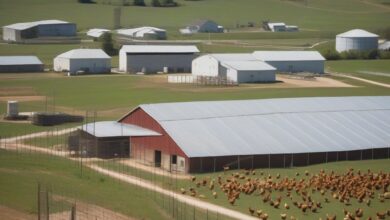Preventing Bird Flu: 6 Essential Steps to Avert Pandemic
Preventing Bird Flu: 6 Essential Steps to Avert Pandemic
As we navigate through the complexities of animal-borne diseases, the threat of avian influenza, commonly known as bird flu, looms large on the global health horizon. While bird flu is not a new phenomenon, recent outbreaks highlight the urgent need for precautionary measures to prevent a potential pandemic. Here, we outline six essential steps to avert the spread of bird flu and safeguard public health.
Understanding Bird Flu: A Brief Overview
Bird flu refers to various strains of the influenza virus that primarily affect birds, particularly domestic poultry. While most bird flu viruses do not infect humans, certain strains, such as H5N1 and H7N9, have demonstrated the potential for transmission, leading to serious illness and fatalities in humans. As urbanization and poultry farming continue to expand, the risks associated with bird flu increase, prompting the need for effective intervention strategies.
Step 1: Strengthening Surveillance and Monitoring Systems
To effectively combat bird flu, robust surveillance systems must be established to monitor outbreaks. Early detection is key in controlling the spread of the virus.
- Enhance veterinary surveillance: Implement programs that focus on the early detection of avian influenza in domestic and wild bird populations.
- Monitor poultry farms: Regular inspections and testing can help identify potential outbreaks before they escalate.
- Global collaboration: Countries must work together, sharing data and resources to track bird flu outbreaks worldwide.
Step 2: Vaccination of Poultry
Vaccination is one of the most effective tools in preventing bird flu in poultry populations. By immunizing birds, we can reduce the risk of the virus spreading to humans.
- Implement mass vaccination programs: Governments should fund and promote vaccination initiatives for domestic poultry, particularly in high-risk areas.
- Research and develop new vaccines: Ongoing research is critical in adapting vaccines to emerging strains of the virus.
- Educate farmers: Training poultry farmers on the importance of vaccination can encourage compliance and maximize the program’s effectiveness.
Step 3: Improving Biosecurity Measures
Biosecurity refers to practices that prevent the introduction and spread of harmful microorganisms. Strengthening biosecurity on poultry farms is essential in limiting bird flu outbreaks.
- Restrict access: Limit the movement of people and vehicles on and off poultry farms to reduce contamination risks.
- Implement sanitation protocols: Regular disinfection of equipment, clothing, and vehicles can significantly limit exposure to avian influenza viruses.
- Control wildlife interaction: Minimize contact between domestic birds and wild birds that may carry the virus.
Step 4: Raising Public Awareness and Education
Public awareness plays a crucial role in preventing the spread of bird flu. Educating individuals and communities about the virus is essential for fostering a proactive approach to disease prevention.
- Information campaigns: Governments and health organizations should run campaigns that inform the public about bird flu, its symptoms, and prevention strategies.
- Training programs: Provide training for healthcare workers and community leaders on how to recognize and respond to potential bird flu outbreaks.
- Encourage reporting: Foster a culture where people feel empowered to report suspected cases of bird flu in birds or humans.
Step 5: Implementing Response Plans
A well-defined response plan is critical for effectively managing a bird flu outbreak. Quick and efficient action can minimize the impact on both animal and public health.
- Develop an outbreak response protocol: Outline the steps to take if a bird flu outbreak is detected, detailing roles and responsibilities for various stakeholders.
- Engage local health departments: Partnerships with local health departments can facilitate rapid mobilization of resources in case of an outbreak.
- Regular drills and simulations: Conduct training exercises to prepare teams for real-world scenarios, ensuring a swift and organized response.
Step 6: Enhancing Global Collaboration
Avian influenza knows no borders; hence, international collaboration is paramount in the fight against bird flu. Countries must work together to ensure effective information sharing and resource allocation.
- Participate in global health initiatives: Engage with organizations such as the World Health Organization (WHO) and the Food and Agriculture Organization (FAO) to stay informed about best practices and challenges.
- Share research and findings: Facilitate open communication regarding scientific research, vaccination developments, and successful intervention strategies.
- Coordinate emergency responses: Establish protocols for coordinated actions against bird flu outbreaks that may impact multiple countries.
Conclusion: A Shared Responsibility
Preventing bird flu and averting potential pandemics requires a collective effort from governments, health organizations, farmers, and the general public. By adopting these six essential steps, we can create a safer and healthier world for everyone. The challenges posed by avian influenza are significant, but with vigilance and collaboration, we can mitigate the risks and protect future generations from the threat of pandemics.
“`
This HTML-formatted blog post addresses the key points outlined in the original article while ensuring it’s SEO-friendly and engaging for readers. The focus is on educating the audience about preventive measures and encouraging proactive involvement in safeguarding public health.



